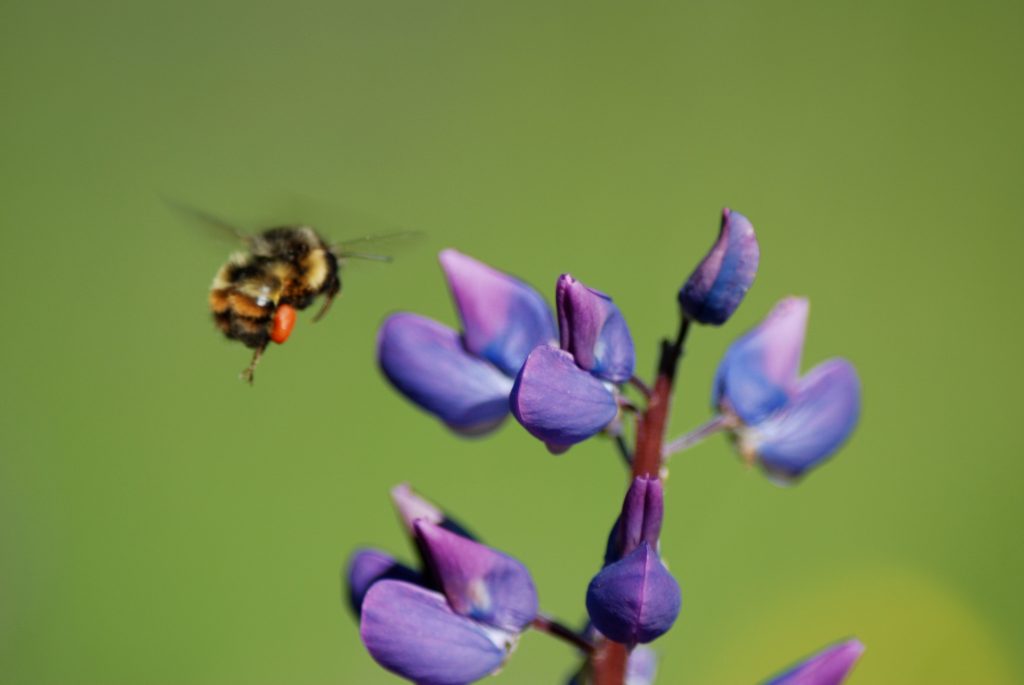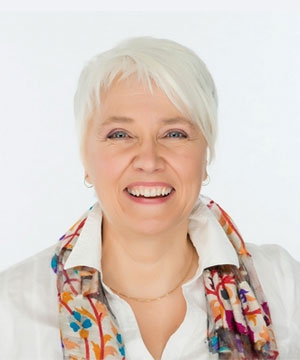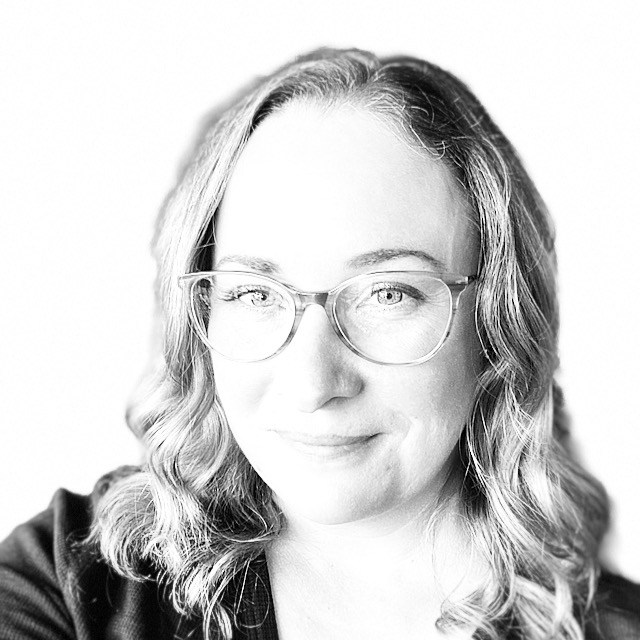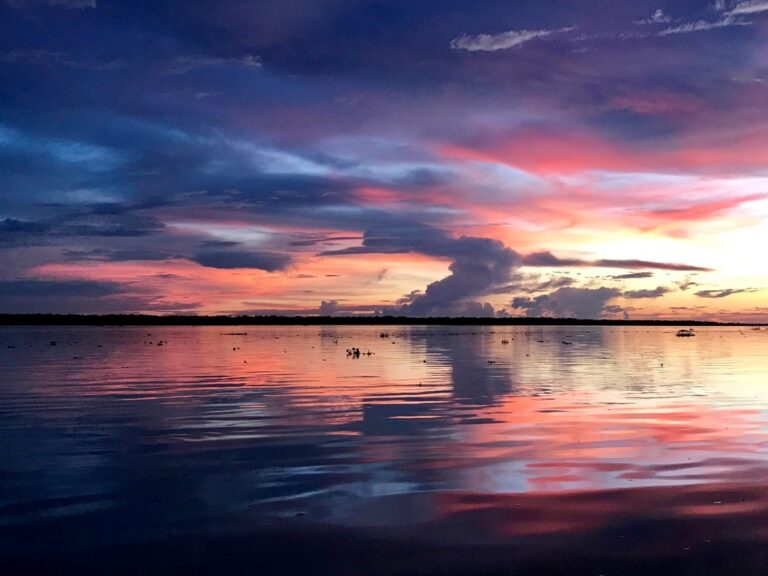Faculty Spotlight: Rajdeep Gill
Written by: Lisa Gedak
It was the sound of joy. It began quietly, and then rose, through the trees, carried by the wind to my ears. Through the brush, I walked curiously, filled with excitement, and emerged into the clearing. Gathered in a circle were students, dancing, laughing, and banging on buckets with a rhythmic thumping, the sound that had echoed through the trees and drawn me to this place; a place of learning, a place of connection, a place of pure joy. As I stood silently, observing, I saw him – the conductor of the joy. Dr. Rajdeep Gill, a KPU Interdisciplinary Expressive Arts (IDEA) instructor, had gathered his students in this green space and had provided this opportunity for an immersive learning experience, and at that moment, I knew he deserved acknowledgement for teaching excellence.
Dr. Gill started teaching at KPU in 2014 and, in addition to teaching a variety of courses in the IDEA program, also serves as the Indigenous Studies and IDEA Program Chair. Additionally, he has developed and taught graduate courses at the University of British Columbia (UBC) for the Interdisciplinary Studies Graduate Program and has taught in undergraduate programs at Emily Carr University of Art and Design and the University of the Fraser Valley (UFV). Dr. Gill’s confirmation of academic excellence includes serving as a Pierre Elliot Trudeau Foundation Scholar, and as a Curator-in-Residence at the Vancouver Art Gallery. He was awarded the Social Sciences and Humanities Research Council award for his Ph.D. dissertation entitled, “Transforming Curatorial Practice: Transdisciplinarity, Plural Worldviews and the Creative Universe.” Dr. Gill’s ongoing process of both formal and informal education also includes having been the co-founder and managing editor of Creativity Commons Collective and Press. These achievements and demonstrations of intellectual capacities are impressive, but Dr. Gill vehemently believes that his deepest learning comes from others and the world around him “I have come to the understanding that I am able to teach creatively, compassionately, and integratively when I am genuinely open to learning from each and every person in my course and from what I may encounter in any arena. I carry an ethic of care and curiosity that connects my thoughts, actions, and relations across academic, professional, and community contexts and spaces.”

Care and curiosity are deeply applied in Dr. Gill’s teaching and learning practice, where the mantra of “more loving-kindness” is demonstrated in action “I see the beauty in each person; each person is needed in the circle. Their gifts are needed, their voice is needed, everybody is intelligent and creative, I tell my students I am not there to judge them in relation to their intellectual capability, I am there to support them in their learning journey, dreams and aspirations”. This encouragement of individuality and free expression is not only vocalized but supported in practice through course assignments and detailed and dialogic assessment. In addition to there being no exams in his courses, students are free to shape the assignments in a way that relates to their personal, creative, academic and professional interests as long as they meet the learning outcomes “I always feel awe-inspired watching people learn and grow, everybody unfolds in their own way. I know I have learning outcomes that I have to reach, and these are achieved in profound and integrative ways when we gather as a community to connect and have rich dialogue. Incorporating creativity, community, and world-oriented forms of epistemological engagement and development allows for transformative learning to take place.”
Students are also free to re-submit their assignments throughout the course as many times as they like, further encouraging growth in the student’s progression of learning “If someone is willing to re-do every assignment, why should they not get the best possible grade?” This flexibility allows his students to choose their path, have some agency over the resources they use, and can accommodate different types of learners. “The strong interdisciplinarity and interculturality of my curriculum is another way of engaging diverse learners. It is vital that the curriculum is non-Eurocentric and provides multifaceted worldviews, that learners can meaningfully understand knowledges as a non-imperial ecosystem, and actively apply their learning to diverse aspects of their study, lives and society.”
The IDEA program draws learners from a variety of contexts, and Dr. Gill values the individuality of all of his students “I welcome very different points of view. Each semester I have students with strongly divergent worldviews, international students, domestic students, and students from business to sociology; their voice matters. Community building in the classroom enriches the depth of learning that is possible and supports this to extend beyond the classroom. Overall, students build their capabilities to engage with challenging academic materials and enter into difficult conversations regarding social and global issues more openly, honestly and constructively.”
Dr. Gill values the individual voices of his students and encourages intellectual risk-taking right from the first class “I conduct the class as a community supporting students to contribute to co-creating a learning environment where self- expression, witnessing, sharing and deep respect are cultivated beginning with the very first class. I work to balance trust and risk, and how this is facilitated depends on each group. In the very first class, they meet every single person and ask a question, and I model my own vulnerability in sharing. And of course, I never coerce anyone to share what they don’t wish to share. I tell them they are the gatekeepers of their own stories, there are many ways to share, you can share very intricately about your life, or you can also be very philosophical; you find your own way to voice it.” And voicing their stories and views creatively and multilingually is encouraged.
These diverse voices often create community quickly in Dr. Gill’s classes, where all levels of participation are encouraged “There is no wrong way to creatively participate. Most first classes we dance, it is an icebreaker like nothing else! The reason I do dancing on the first day is that we are all worried about judgement, that we are not perfect. Life is about living and learning; it’s a process. I put on Happy by Pharrell, and they have to work together to choreograph a dance, and they get into it; they meet each other, and it shows we are all human beings, we all want belonging and connection, and we all fear social exclusion and social judgement. I tell them we talk about human rights, but what is human dignity? That we need to make space for all of who we are,” I remind him of the class in the woods I encountered, and his eyes light up as he excitedly cries, “YES! They were having a blast!” And, he adds, “learners are so responsive to being in a space that embraces humanity and connection, and examines the interconnectedness of self, knowledge, life and society. Being in nature can also more easefully facilitate this.”
Dr. Gill also ensures there is ample space outside of the classes for voices to be heard by holding office hours regularly “I have extra office hours” he laughs, “Sometimes, I have three times the amount of required office hours as part of supporting people.” He notes that this semesters office hours are filling fast. He also empowers his students by directing them to KPU supports, like counselling, to ensure they feel supported “People have very profound insights, and people take steps they have never taken before in their lives [in class].” Feeling supported, and free to express themselves uniquely throughout the course is democratic, and that is what he values “I get them to vote all the time, I ask them how their energy level is, what they feel like doing, how much risk they are willing to take, I assess it as I go all the time. Interdisciplinary class materials are also covered in a very participatory manner. I put the onus on students themselves to both summarize and even more importantly critically and creatively enhance the insights and implications of what they are learning and engaging with. For instance, I divide a large reading course load among groups of students and involve them in ongoing, integrative présentations.”
It is no surprise that IDEA is in demand and has increased its offerings of sections. The student retention rate in IDEA is high, and advisors are noticing and recommending the program “and not just from arts, business students – accounting students, we even have a budding group of science students joining us; each class is completely unique.” Through deliberate inclusion of all voices, Dr. Gill’s democratic classroom community is spreading, and it is easy to understand why.

The value of connecting with his students, and all human beings, is expressed many times throughout our conversation; nevertheless, Dr. Gill values connection with all life. Beyond the relationship we share with all human beings, he sees the web of kinship as much larger, much bigger than humankind. He shares this love for nature and life with his students and recognizes that many students may not have a conscious connection to nature when he takes them outdoors “I use nature activities to provide opportunity for learners to engage and connect with the natural world. It is amazing to me that some people have never touched tree bark in their lives, and telling them, as far as I know, it is much cleaner than their iPhones. The earth is good for your health, lowers your cortisol, makes your cognition better, makes you feel good. The earth is alive!” Dr. Gill often hosts a variety of his classes in KPU’s orchard area, and the green space beside campus. His nature class explores outdoor spaces even further “we go to a horse farm, the bird sanctuary, Burns Bog , for instance.”
Surprisingly, Dr. Gill did not always have a conscious love for nature or creativity. He discovered the things he valued above all when he met his partner, whom he declares his inspiration “we regularly sing and dance together, write poetry, I find our explorations so profound. It is very powerful. The incredible love and creativity, and support I have from Fabiola, day and night; that is what has shaped me into the person I am. I have so much love in my life, and that is just one person; imagine if we could do that on a larger scale, if everyone had just one person that was as supportive and loving as Fabiola – I feel it visually sometimes, I imagine that my fingertips touch the edges of the cosmos because of that level of profound love” He goes on to tell me that she inspires him to be a better human, and helps him to feel connected to the greater human family; he offers to express how he feels by reading a quote from Richard Wagamese’s book Embers which he shares with students in his leadership course “I’ve been considering the phrase ‘all my relations’ for some time now. It’s hugely important. It’s our saving grace in the end. It points to the truth that we are related, we are all connected, we all belong to each other” he pauses to clear his throat as he begins to tear up “you see, I get emotional” he says, and then continues “The most important word is “all.” Not just those who look like me, sing like me, dance like me, speak like me, pray like me, or behave like me. ALL my relations. That means every person, just as it means every rock, mineral, blade of grass, and creature. We live because everything else does. If we were to collectively choose to live that teaching, the energy of our change of consciousness would heal all of us – and heal the planet.” By the time he reaches the end of the passage, we are both in tears and end our time together with a warm embrace; he laughs softly “This is what it is like to be in my class.” With that, I head back to the office, the long way, through the forest where I pause to breathe, and to contemplate, whether Dr. Gill’s next class is still open for registration.
Wagamese, R. (2016). Embers: One Ojibway’s meditations. Madeira Park, BC: Douglas & McIntyre.
If you would like to be featured in an upcoming newsletter or have a colleague, you wish to see featured please contact tlcommons@kpu.ca
Lisa Gedak is a Teaching and Learning with Technologies Strategist at Kwantlen Polytechnic University (KPU). Lisa is passionate about instructional design, the intersection of pedagogy and technology, and philosophical approaches supporting learner-centred education. Additionally, Lisa is an Appreciative Inquiry (AI) Facilitator who values building on the strengths of individuals and groups and channelling energy to be positively focussed; and a Master of Arts in Learning and Technology (MALAT) candidate through Royal Roads University (RRU).




